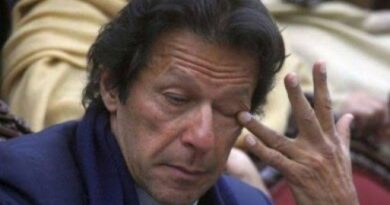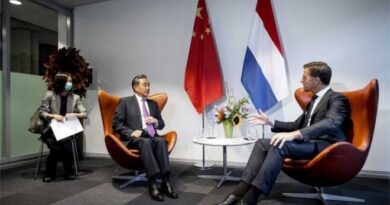Why are Nepal and India Getting Far?
In popular electoral politics, no Prime Minister or President ignores the public sentiment of the country. After the partition of Jammu and Kashmir, India released a new map in November last year, the people of Nepal protested after seeing the Kalapani area in that map.
The people of Nepal also expressed anger against their government. In the whole dispute, the Government of Nepal had to come forward and objected to the map of India. Since then, there was pressure on the Government of Nepal to do something.
When India built a road leading to China in script, Nepal also released a new map after a few days and included all the areas it claimed on its map. India objected to this and the dispute between the two countries is still going on.
It is said about Nepal’s Prime Minister Oli that he wants to maintain a balance between his two big neighbors India and China in foreign relations.
Oli was once called pro-India. It is believed that his stance in Nepal’s politics was once in India’s favor.
Oli is considered to have a major role in the historic Mahakali Treaty between India and Nepal in 1996. Oli used to be a cabinet minister in Nepal in the 1990s. He was also the Foreign Minister of Nepal until 2007. During this, Oli had very good relations with India. Now it is being said about Oli that he is more inclined towards China. However, Nepal is a sovereign nation and it is independent of international relations.
KP Sharma Oli became the Prime Minister of Nepal in February 2015. He has come to India three times since then. He has spoken about increasing cooperation with China and reducing dependence on India in his election campaign.
On India’s dissatisfaction with Nepal’s new constitution, the Oli government of Nepal has been saying that this is its internal matter. Oli has been staunch about the 1950 Peace and Friendship Treaty between India and Nepal.
They say that the treaty is not in favor of Nepal. Oli has also spoken in Nepal’s election campaigns against this treaty. Oli wants this treaty with India to end.
Wanton Politics
After becoming Prime Minister in 2008, Prachanda surprised Delhi when he first went to China, breaking the established tradition of visiting Delhi.
Nepal released its official map last week showing Lipulekh, Kalapani and Limpiyadhura areas within the western border of Nepal.
Most people of Nepal have seen this as a strong step of the government. However, Oli’s critics see this as an attempt to divert attention from his criticism of the poor management of Kovid-19 in the country.
India believes that these territories fall under its Uttarakhand state. Nepal on the other hand says that they are part of its far west province. Nepal says that the Sugauli Treaty of 1816 and all the bilateral treaties that followed have clearly stated that the areas east of Mahakali (Sharda) came under Nepal.
Leaders of the opposition Nepali Congress and the Rashtriya Prajatantra Party, once a supporter of the Raj family, are also expressing similar sentiments on the Indo-Nepal border dispute like Mahakali and Susta (Navalparasi along the Narayani or Gandak river). It is clear from this that all the parties of Nepal are unanimous on this issue.
September 2015: Blockade of Indo-Nepal border
In September 2015, the undisclosed blockade was also the reason for Oli’s stand against India. This was the time when there was a big earthquake in Nepal just four months ago.
At that time, India had expressed its displeasure over the implementation of the new constitution of Nepal. This was because India felt that Nepal had ignored many demands of the Terai parties of southern Nepal in the new constitution.
After this, the Terai leaders and activists closed the Indo-Nepal border from east to west. India stood firmly with these opposing leaders. Nepal had alleged that India is blocking the borders of Nepal. However, India continued to dismiss these allegations.
These border areas were closed for almost six months. Due to this, many very important supplies including petrol and gas were disrupted in Nepal.
At that time, the Olli-led multilateral government in Nepal also refused to bow down and maintained a strong stand against India. Instead of bowing to India, Nepal thought it appropriate to resort to its neighboring country China for other supplies including petroleum.
Due to lack of cooking gas and fuel, the people of Nepal faced great difficulty. In such a situation, Nepal made a completely new trade and transit deal with China.
After the end of the Nepal border blockade movement of Terai activists, India resumed the supply of essential things to Nepal.
Heartburn of India and Nepal
Whatever the reason may have been, but the 2015 blockade at key trade points along the Indo-Nepal border of more than 1,800 km was a reminder of the bad era of 1989–90 when India took 21 of the two countries’ borders. 19 points were closed. Due to this step, the people of Nepal had to face huge economic difficulties.
The blockade of 1989–90 was because India rejected Nepal’s proposal to do a separate trade and transit deal. India wanted only such a deal.
At that time, India was also upset with the decision of the then royal family of Nepal to buy anti-aircraft guns from China.
India also did not like Nepal’s proposal of work permit for Indian migrant laborers.
On the other hand, Nepal was not even ready to give citizenship to thousands of people in the southern Terai districts joining India.
However, all these matters were calmed when King Birendra of Nepal lifted the 30-year-old ban on political parties in April 1990, bowing to the first mass movement. After this, the new National Integration Government signed a new deal with India.
What Options do India have?
Thirty years later and after five years of tension with India over the Terai of Nepal, both countries have come face to face once again.
The script writing dispute has come to light at a time when in recent times Delhi-Kathmandu was seen committing mistakes through several high-level visits and transactions.
Foreign policy experts in both Nepal and India have requested the leaders of both countries to start a diplomatic dialogue immediately after the script conscription.
Due to Kovid-19, India put diplomatic initiative on hold. These experts say that as a big and powerful neighbor, India should take an initiative towards ending this dispute.
The veteran diplomats are disappointed with the recent events. The Indian Ambassador to Nepal, and now living in Delhi, said in an interview to a leading Nepali newspaper that this dispute cannot be resolved in any other way except through diplomatic dialogue. These former diplomats have warned against avoiding any act of provocation.
KV Rajan, who was India’s ambassador to Nepal, told Suresh Nyopane of Nepal’s Kantipur daily, “Relations are so old and strong that there is no issue between the two countries that Nepal and India cannot resolve with mutual trust and dialogue.” But, both sides should not allow non-essential public opinion to become a barrier to bilateral dialogue. “
Initiatives at Foreign Secretary level begin
Nepal is also ready for this. Nepal’s Foreign Minister Pradeep Gyawali has said that the Nepalese side is ready to start bilateral discussions to resolve the river border dispute. He told the Kantipur daily, “If India had looked at Nepal’s previous request (soon after India map of November 2019), things would have reached a good point by now.”
India recently said that diplomatic negotiations will begin to resolve border issues after the end of the lockdown involving Kovid-19.
But, some Nepali commentators say that to begin with, bilateral talks at the foreign secretary level through video conference will have good results. They say that this conversation will increase confidence and mutual agreement will develop.
Experts say that the two countries have benefited from the centuries-old relationship between Nepal and India.
There are advantages and disadvantages to moving without a visa on the open border. But, the good thing in this is that the pilgrimage, tourists and migrant laborers of both the countries have benefited from the ease of movement across the border on a large scale.
Kovid-19 has severely affected the economy of both countries. In both countries, migrant workers are trapped in their respective places. Apart from this, after the recent phone conversation between Modi and Oli, many workers are also staying in temporary quarantine centers built on both sides of the border.
The authorities are trying to open the business, but no one knows when the situation will be normal.
Nepal’s Prime Minister Oli said in the House of Representatives this week that “Nepal and India have had excellent relations. They are unique and good. Yes, there are difficulties on some border issues, but they are not impossible to solve.” . We want to solve them and make our relationships even better. “
But, the big question still remains – is the Modi government in India and the Oli government of Nepal ready to do so? If so, when will this diplomatic conversation begin?



